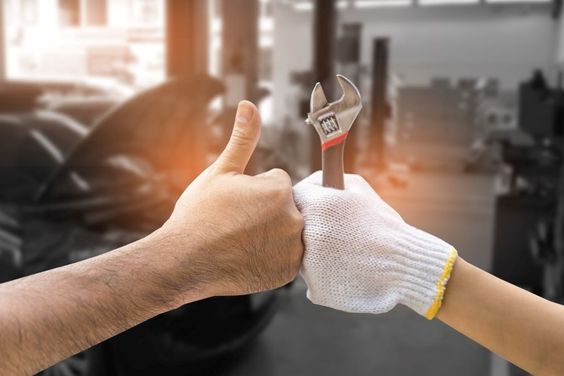As a car enthusiast and someone who has experienced their fair share of engine woes, I understand the frustration and inconvenience that comes with encountering engine problems. Whether it’s a mysterious knocking sound, a stubborn check engine light, or sudden loss of power, engine issues can disrupt our daily lives and leave us feeling helpless. However, armed with knowledge and a basic understanding of common engine problems and solutions, you can navigate these challenges with confidence.

In Auto Service, here are some of the most prevalent engine problems faced by motorists and provide insights into effective solutions to keep your vehicle running smoothly.
1. Check Engine Light Illumination
One of the most dreaded occurrences for any driver is the illumination of the check engine light on the dashboard. While it may signal a range of potential issues, such as a loose gas cap or a faulty oxygen sensor, it’s essential not to panic. When faced with a check engine light, the first step is to use a diagnostic tool to retrieve the trouble codes stored in the vehicle’s onboard computer. These codes can provide valuable insights into the underlying problem, allowing you to address it promptly. Depending on the severity of the issue, solutions may range from simple repairs, such as tightening a loose connection, to more complex diagnostics and component replacements.
2. Engine Misfires
An engine misfire occurs when one or more cylinders fail to ignite properly, resulting in a rough idle, hesitation, or loss of power. Common causes of engine misfires include faulty spark plugs, ignition coils, fuel injectors, or engine sensors. To diagnose and resolve an engine misfire, start by inspecting the ignition system components for signs of wear or damage. Replace any worn or malfunctioning parts, such as spark plugs or ignition coils, and ensure proper ignition timing and fuel delivery. Additionally, performing a thorough cleaning of the fuel system and intake components can help improve engine performance and prevent future misfires.
3. Overheating
Engine overheating is a serious issue that can lead to significant damage if left unchecked. Common causes of engine overheating include low coolant levels, a malfunctioning thermostat, a faulty radiator fan, or a clogged radiator. To address an overheating engine, first, safely pull over and allow the engine to cool down before attempting any repairs. Check the coolant level and top it off if necessary, ensuring that the coolant mixture is at the correct ratio. Inspect the thermostat for proper operation and replace it if necessary. Additionally, check the radiator fan and associated relays or fuses for any signs of malfunction. Finally, flush the cooling system and inspect the radiator for debris or blockages that may impede airflow.
4. Oil Leaks
Oil leaks are a common nuisance that can lead to engine damage if not addressed promptly. Common sources of oil leaks include worn gaskets, seals, or oil pan bolts, as well as damaged or corroded oil lines. To identify and repair an oil leak, start by locating the source of the leak using a flashlight and inspection mirror. Clean the affected area thoroughly to remove any oil residue, making it easier to pinpoint the source of the leak. Replace any damaged gaskets, seals, or bolts, and ensure that all connections are tightened securely. Additionally, consider using a leak detection dye or UV light to aid in locating hard-to-find leaks.
5. Rough Idle
A rough idle can be indicative of various underlying issues, such as vacuum leaks, dirty fuel injectors, or a malfunctioning idle air control valve. To diagnose and address a rough idle, start by inspecting the engine’s air intake system for any signs of leaks or obstructions. Check the condition of the air filter and clean or replace it if necessary. Next, inspect the fuel injectors for buildup or clogs and perform a fuel system cleaning if needed. Finally, check the idle air control valve for proper operation and clean or replace it as necessary. Performing a thorough tune-up, including spark plug replacement and ignition system inspection, can also help improve engine idle quality.
6. Loss of Power
Experiencing a sudden loss of power while driving can be alarming and dangerous, especially on busy highways or steep inclines. Common causes of power loss include fuel delivery issues, ignition system problems, or restricted airflow to the engine. To address a loss of power, start by checking the air filter and intake system for any obstructions or restrictions. Inspect the fuel system components, including the fuel filter, pump, and injectors, for signs of contamination or malfunction. Additionally, check the ignition system components, such as spark plugs, ignition coils, and distributor cap, for wear or damage. Finally, consider performing a compression test to assess the overall health of the engine and identify any potential mechanical issues.
Conclusion
Overall, as per Auto Service, understanding common engine problems and solutions is essential for maintaining the reliability and performance of your vehicle. By familiarizing yourself with the symptoms of common engine issues and knowing how to address them effectively, you can save time, money, and frustration in the long run. Whether it’s diagnosing a check engine light, addressing an engine misfire, or resolving an oil leak, being proactive and methodical in your approach to engine repair can help keep your vehicle running smoothly for miles to come. Remember, when in doubt, consult with a qualified mechanic or automotive technician for professional diagnosis and repair assistance.
Circle S Auto Service
12441 N Saginaw blvd, Fort Worth TX. 76179
817-439-8020